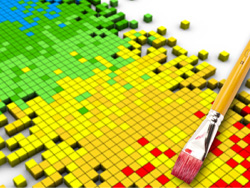 You’ve heard the old saying, “never judge a book by its cover.” In today’s competitive world of retail, however, customers have no choice but to judge products by their packaging. Busy consumers simply don’t have the time to painstakingly compare products and weigh their pros and cons. In this sense, then, a product’s packaging can really make or break a customer’s decision to buy. If you’re not already focusing on creating packaging and labeling that appeals to your customer base, your business could be missing out on profit.
You’ve heard the old saying, “never judge a book by its cover.” In today’s competitive world of retail, however, customers have no choice but to judge products by their packaging. Busy consumers simply don’t have the time to painstakingly compare products and weigh their pros and cons. In this sense, then, a product’s packaging can really make or break a customer’s decision to buy. If you’re not already focusing on creating packaging and labeling that appeals to your customer base, your business could be missing out on profit.
The Undeniable Importance of Product Packaging
Believe it or not, a product is only as good as its packaging. Think about it: if a customer chooses another product over yours because it’s packaged in a more appealing manner, does it even matter that yours is the better product? Today, retail shelving space is more competitive than ever, and your product is likely to be placed adjacent to competing products from other brands. Customers, by their very nature, tend to be drawn to products with packaging that appeals to them; think about the last time you went to pick out a new book or even a bottle of wine. More than likely, you gravitated toward the labels and covers that you liked. Successful product packaging can not only help encourage sales but can also help build brand recognition. Think about some of the most popular brands across the globe. Apple, for example, is known for its sleek and minimalist packaging. In this sense, your packaging and labeling is a form of marketing in itself.
Considerations for Better Product Design
Unfortunately, even if you know how to create the best product on the market, that’s not going to do you much good if your packaging is boring. By keeping some key considerations in mind as you design your packaging, you can hit a home run with your customers. Your Target Audience Designing amazing packaging starts with really knowing your audience. This means being able to narrow down your demographics, age group, and even gender (if possible). From there, you can better tailor your packaging to your target audience. For example, if your ideal customer is a teenage girl, then your packaging will probably resonate more if it’s bright in color and stands out from the rest. On the other hand, more neutral colors and sleek designs may appeal to an older, professional audience. Your Packaging Budget In a perfect world, you wouldn’t have to worry about a budget when designing your packaging. Realistically, however, you’ll need to design packaging that’s within your company’s budget and reflects your desired price point. For instance, if you’re trying to market your product as a high-end option that’s more expensive than your competitors, then cheap packaging isn’t going to do the trick; you’ll need to spend a little more on premium packaging materials to get your customers to see the perceived value. On the other hand, even less expensive packaging can be played up with the right colors and fonts. A stylish typeface, for example, can add an air of elegance to your labeling without increasing costs. Environmental Concerns Last, but not least, don’t overlook the possibility of using recycled or other environmentally-friendly packaging options—particularly if your target audience is the Millennial generation or another demographic known for being “green.” Yes, you’ll likely spend slightly more on this type of packaging, but your brand will also appeal more to your audience, and your efforts to reduce waste will improve your brand’s reputation in the process.
As you can see, your product packaging undoubtedly plays a huge role in your sales and overall success as a company. Looking for help with your package/product design? CQ Solutions is here to help
